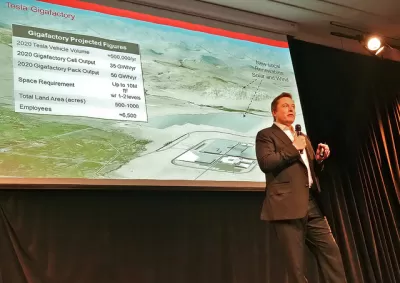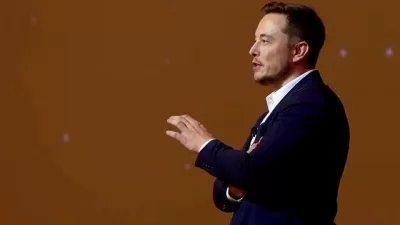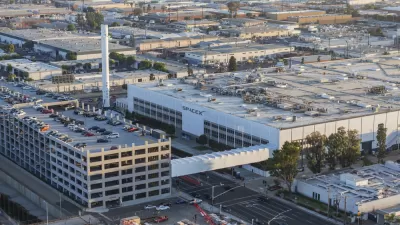Take a first look at the fruits of the Boring Company's labor. According to Elon Musk, the tunnel will be open to the public for free rides later this year.

Elon Musk released a preview of the Boring Company's first underground tunnel last week, promising that the public will be able to ride through the tunnel in the coming months.
As reported by Alene Tchekmedyian, Musk posted a sped-up video of a ride through the tunnel on Instagram.
Tchekmedyian provides additional background on the project, including the plans for more of the same in other parts of the city, especially after the "City Council's public works committee last month unanimously approved an environmental review exemption for a tunnel that could run 2.7 miles through West Los Angeles, giving a space for Boring Co. engineers to build and test the proposed transportation technology." The location of the tunnel in the video released last week wasn't revealed, but it's believed that Musk has been tunneling in the Hawthorne area, near where SpaceX is located.
An article by Laura J. Nelson and David Zahniser, however, follows up on the sensational tunnel reveal of the Hawthorne with a dose of reality for Musk's boring ambitions along the 2.7-mile route along the Sepulveda corridor.
Two neighborhood groups have filed a lawsuit over the city of Los Angeles' proposal to fast-track the project by exempting it from environmental review. In Culver City, where the Sepulveda tunnel could end, officials are contemplating their own court challenge. And debate continues over the effect Musk's transportation initiative could have on surface traffic, economic equity and the environment.
Musk's Instagram post also picked up the attention of the national tech media, as evidenced by this article by Sara Salinas.
FULL STORY: Elon Musk unveils video of his first underground L.A. tunnel, predicts rides within months

Planetizen Federal Action Tracker
A weekly monitor of how Trump’s orders and actions are impacting planners and planning in America.

Maui's Vacation Rental Debate Turns Ugly
Verbal attacks, misinformation campaigns and fistfights plague a high-stakes debate to convert thousands of vacation rentals into long-term housing.

San Francisco Suspends Traffic Calming Amidst Record Deaths
Citing “a challenging fiscal landscape,” the city will cease the program on the heels of 42 traffic deaths, including 24 pedestrians.

Amtrak Rolls Out New Orleans to Alabama “Mardi Gras” Train
The new service will operate morning and evening departures between Mobile and New Orleans.

The Subversive Car-Free Guide to Trump's Great American Road Trip
Car-free ways to access Chicagoland’s best tourist attractions.

San Antonio and Austin are Fusing Into one Massive Megaregion
The region spanning the two central Texas cities is growing fast, posing challenges for local infrastructure and water supplies.
Urban Design for Planners 1: Software Tools
This six-course series explores essential urban design concepts using open source software and equips planners with the tools they need to participate fully in the urban design process.
Planning for Universal Design
Learn the tools for implementing Universal Design in planning regulations.
Heyer Gruel & Associates PA
JM Goldson LLC
Custer County Colorado
City of Camden Redevelopment Agency
City of Astoria
Transportation Research & Education Center (TREC) at Portland State University
Jefferson Parish Government
Camden Redevelopment Agency
City of Claremont




























